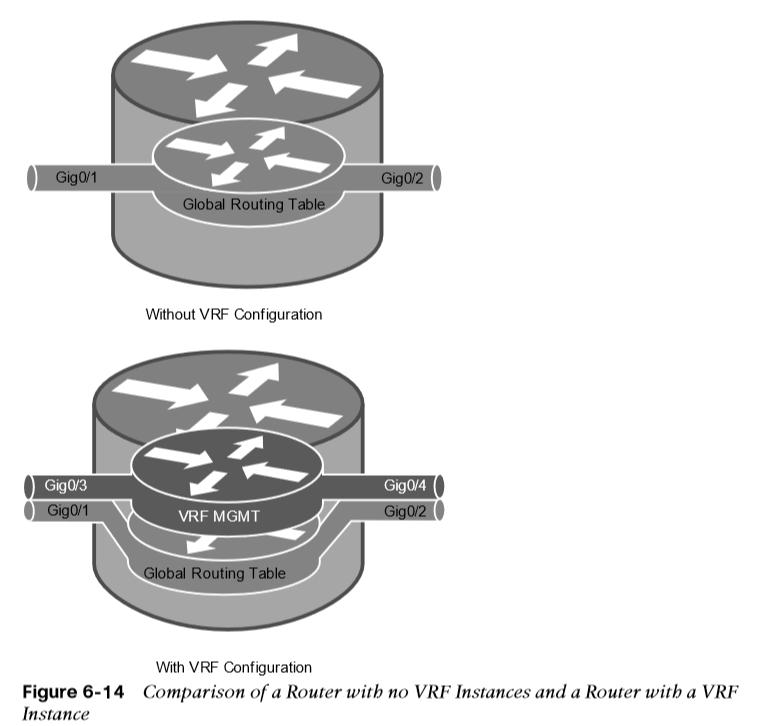
About Lesson
Virtual Routing and Forwarding
the creation of logical routers on a physical router (VRF)
- Virtual routing and forwarding (VRF) is a technology that creates separate virtual routers on a physical router. Router interfaces, routing tables, and forwarding tables are completely isolated between VRFs, preventing traffic from one VRF from forwarding into another VRF.
- All router interfaces belong to the global VRF until they are specifically assigned to a user-defined VRF.
Virtual Routing and Forwarding
The global VRF is identical to the regular routing table of non-VRF routers:
- Every router’s VRF maintains a separate routing table; it is possible to allow for overlapping IP address ranges.
- VRF creates segmentation between network interfaces, network subinterfaces, IP addresses, and routing tables.
- Configuring VRF on a router ensures that the paths are isolated, network security is increased, and encrypting traffic on the network is not needed to maintain privacy between VRF instances.

The creation of multiprotocol VRF instances requires the global configuration command vrf definition vrf-name. Under the VRF definition submode, the command address-family {ipv4 | ipv6} is required to specify the appropriate address family. The VRF instance is then associated to the interface with the command vrf forwarding vrf-name under the interface configuration submode. The following steps are required to create a VRF and assign it to an interface:
- Step 1. Create a multiprotocol VRF routing table by using the command vrf definition vrf-name.
- Step 2. Initialize the appropriate address family by using the command address-family {ipv4 | ipv6}. The address family can be IPv4, IPv6, or both. Step 3. Enter interface configuration submode and specify the interface to be associated with the VRF instance by using the command interface interface-id.
- Step 4. Associate the VRF instance to the interface or subinterface by entering the command vrf forwarding vrf-name under interface configuration submode.
- Step 5. Configure an IP address (IPv4, IPv6, or both) on the interface or subinterface by entering either or both of the following commands: IPv4 – ip address ip-address subnet-mask [secondary] IPv6 – ipv6 address ipv6-address/prefix-length Table 6-5 provides a set of interfaces and IP addresses that overlap between the global routing table andthe VRF instance.


Other useful information:
Join the conversation